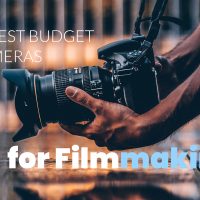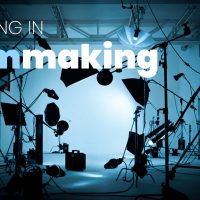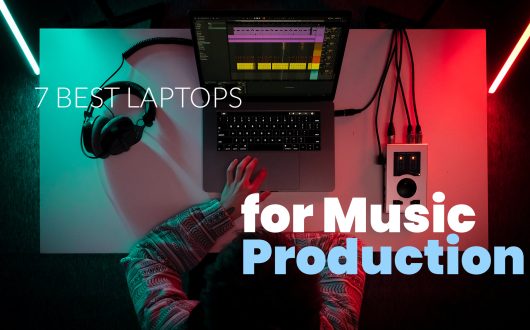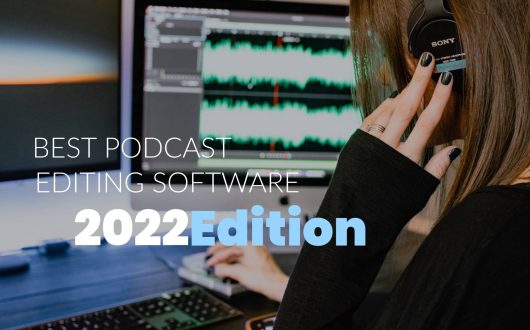
The Audio Buzz Blog
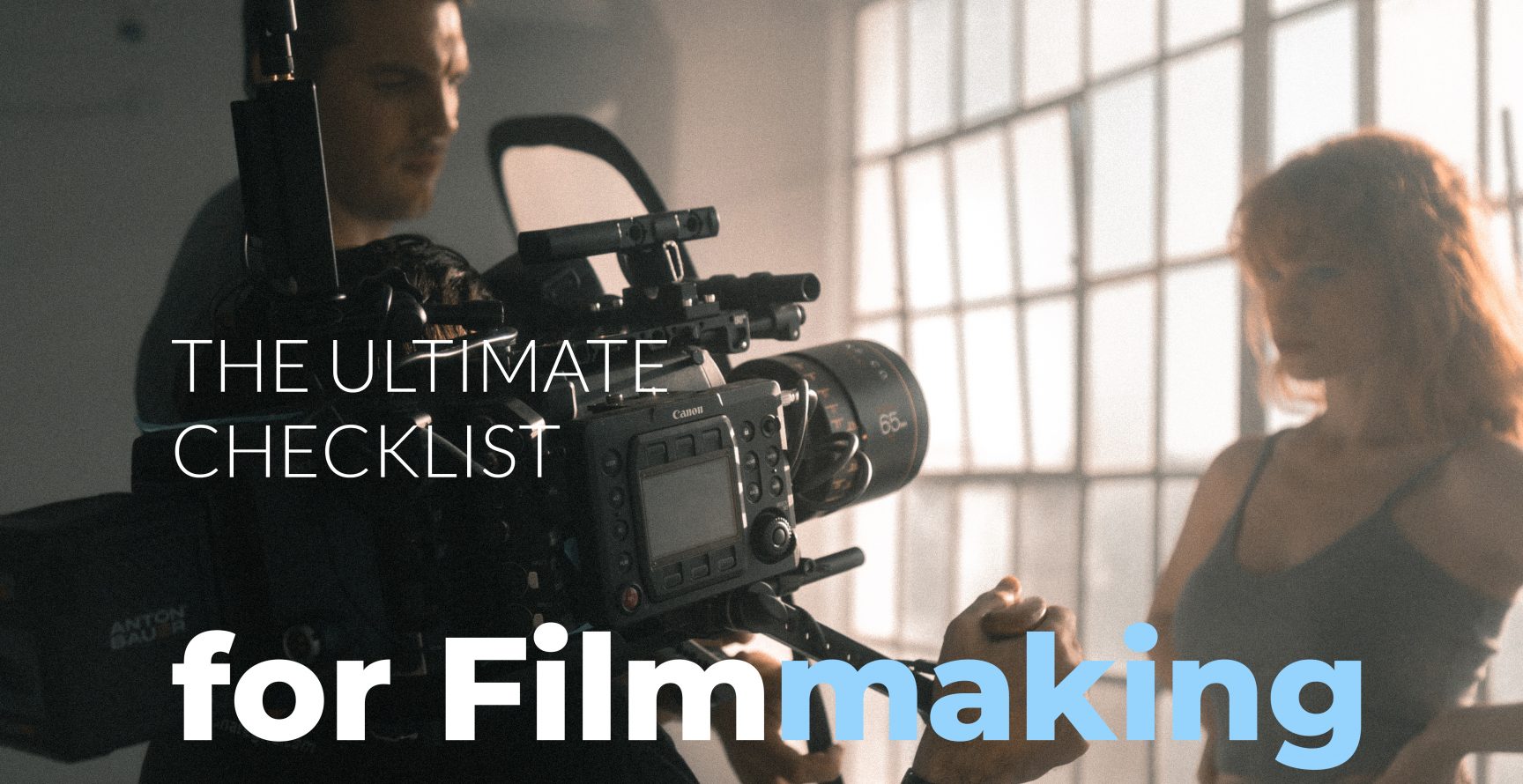
The Ultimate Checklist for Filmmaking
Filmmaking is a creative process, and like any creative process, it’s easy to forget the more practical things involved. Without the right direction, creativity can take you so far off track that you are no longer making the film that you set out to make. Writing your script and seeing it come to life before your eyes are the exciting parts, along with seeing how other people react to it. Those are the reasons people get into filmmaking, to share their art, to push boundaries, not usually to think about permits or camera lenses. So we thought we’d make it easier for you by putting together the ultimate checklist for filmmaking. Creating a successful film takes a lot more than just a great idea, so follow our guide, and you’ll be well on your way. If you have a $1m budget, we would assume you don’t need our help and you know what you are doing. But, if you are like most aspiring filmmakers, your budget will be pretty tight. So, we have written the ultimate filmmaking checklist with that in mind and included some tips to keep your project budget-friendly.
Come Up With a Great Idea For a Film
This one sounds a bit silly, we know!
But, a bad idea will never be a good idea, no matter how many times you rewrite it.
For example, if your concept is a sitcom pilot about monkeys who work undercover for the FBI to infiltrate the mafia, your mum will tell you it sounds fantastic, but the reality might not be so kind.
The point is that you can waste months or more trying to correct something that’s never going to work.
Then you end up ditching it to start over again anyway!
When you have your idea, you should consider a few things.
Is it possible? Writing for a major Hollywood studio might come with very few restrictions, but going at it alone is very different.
If you have a killer idea for the next big superhero movie, that’s awesome!
But, think about how that will look when your special effects max out at swinging your Lego man in a cape past your camera phone.
Creativity knows no bounds; unfortunately, reality does.
Stretch the limits, but don’t start something you can’t finish.
Is there an audience for it? It might be interesting to you, but if your concept isn’t compelling to others, then no one will watch.
Has it been done before? If your idea has been covered before, it’s not necessarily a deal-breaker. It’s rare to find a genuinely unique idea these days.
However, merely doing it again isn’t enough; you need to find a new approach that makes an old idea interesting again.
You get the idea, start from solid foundations, and you can’t go wrong.
But remember, Mafia Monkeys was our idea first!
Develop Your Idea Into a Screenplay

Photo by Pereanu Sebastian on Unsplash
An idea is just the start; now, it needs structure before you can move forward.
This process is when you shape your idea into individual sections that make up a complete story.
Screenplays generally follow the three-act structure, which goes as follows.
Act 1 – Setup
Act 2 – Confrontation
Act 3 – Resolution
In simple terms, they can be thought of as beginning, middle, and ending.
Act 2 is the most important and the longest, usually taking up around half of the duration of the film.
You will need to consider the total length of your film and how much of that time you want to allocate to each act.
Allocating time well is a must; if any part of your film seems rushed or drags on too long, viewers will lose interest.
Make sure you learn more about the three-act structure.
That takes care of how you shape your story, but how you put it down on paper is just as important.
If your screenplay isn’t formatted correctly there is every chance it won’t be read. Keep in mind the people you want to read it probably receive a large amount each week.
Have a look at these screenplay format guidelines.
Lock in your Script
Whether you are writing a 10-minute short or a feature film, the creative is always subject to change.
There are certain scenes that you don’t realize the need to change until you shoot and watch the playback.
That doesn’t mean it’s okay to start with an unfinished or thin script and make it up as you go, that won’t end well.
The integral parts of your story must be locked in, like the protagonist, the leading players, and the structure.
Your story by this point should have a clear timeline, so any major plot points should be identifiable in your screenplay.
If you have the critical aspects of your story in order, it’s easy to make small changes on the fly during filming.
For example, you might decide a particular scene will work better at night rather than during daytime, but the scene’s content remains the same.
Or, maybe something like changing some props or other visual elements, or even rewording some dialogue.
Not everything you see on the screen was written in a script. Think about even the most basic tracking shots and everything the camera passes.
Everything you see in the environment around the subject, whether it’s action or props, can serve a purpose.
Having a locked script means you can go deeper than the main subject and plan secondary visuals.
It also allows you to plan your budget more accurately because you now know everything you need.
Distribution and Marketing
Because we are assuming a small budget, that means your film won’t be hitting cinemas all over the country.
That doesn’t mean you don’t have options; you should start to think about how you are going to get your film out there.
You could decide to exclusively stream your film online, where you have easy access to platforms like YouTube, Vimeo, etc.
Going this route might save you a few headaches because those platforms are free to upload, and have billions of potential viewers waiting.
The hard part is convincing viewers to choose your video over millions of others available.
That’s why identifying your target audience is crucial; otherwise, any marketing budget you have will go straight down the drain.
Let’s say you are making a film about skateboarding; your audience isn’t likely to be females over 70 years old. (Possible but not likely)
Identify the people most likely to relate to your film through age, gender, location, interests, and so on.
Doing some proper research before spending on social media advertising could save you a lot of money.
It’s never going to be an exact process, but anything that can help you maximize your reach is worth the effort.
There are then subscription-based streaming services like Netflix that are huge, but getting your film on those services is a different game altogether.
Whether you want to submit a screenplay or a finished film to a service like Netflix, you must go through a licensed literary agent or a producer, executive who has a working relationship with the platform.
So it’s not impossible, but it’s a tall order, especially for a first-time filmmaker.
It may be the case that submitting to platforms like Netflix or Amazon Prime Video comes after you’ve put your film out and got a good response on your own, or if you are fortunate – they approach you.
As a filmmaker, there’s nothing quite like a theatrical release and seeing your name up in lights, or at least your film.
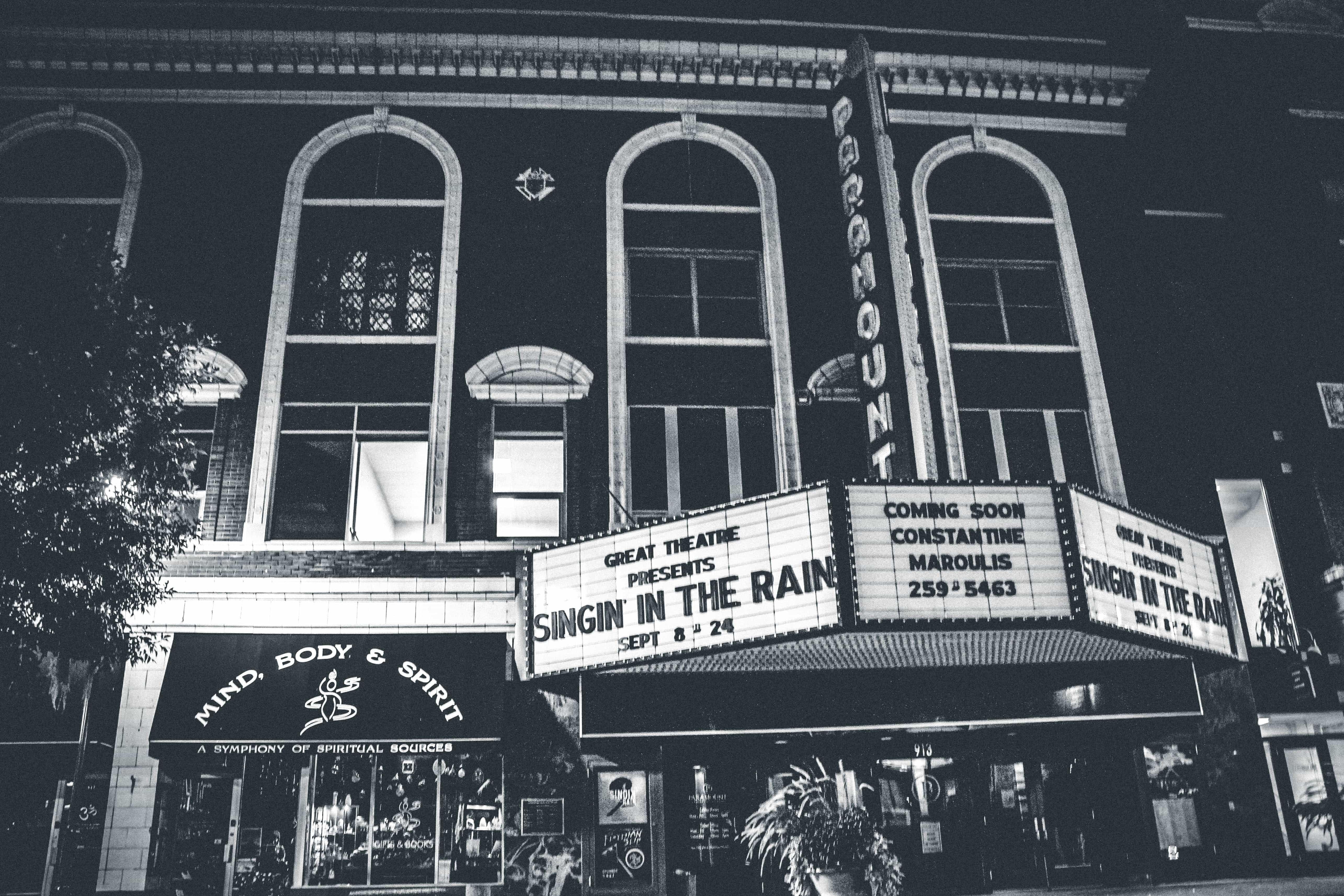
One thing you can do is submit your film to independent movie theaters for consideration.
This process can be quite lengthy, so if you plan to do it, make sure you allow enough time in your schedule.
We won’t go too deep into submitting to movie theaters because a quick google search will tell you if and when theater groups are accepting submissions.
For cases where it’s a single small movie theater rather than a chain, it wouldn’t do any harm for you to pop in for a face to face chat.
If you can’t get your film into any movie theaters, but you want a public showing, you haven’t reached the end of the road yet.
You could arrange a screening yourself in partnership with a different type of venue.
For example, if it was a skateboarding film, an outdoor screening at a skate park could be perfect.
If the venue doesn’t have a license to show films in public, you will need to pay for one yourself.
So factor that cost into your budget along with any other event expenses you may incur.
For many new filmmakers, the dream is to have their film shown at prestigious film festivals around the world.
It’s something that you could aim for before or after your original release, but there are some do’s and don’ts when submitting to film festivals.
The main thing you need to have is a definite distribution path for your film.
Don’t rely on something that might not happen, have a solid plan, and if something bigger comes along, that’s great.
As for marketing, we mentioned social media ads already, and that’s probably where most of your focus should be.
So, here’s a few things you can do to make sure people hear about your film.
Understand your audience
We already touched on this one, but it’s the foundation of any marketing campaign.
An excellent way to find your target audience is to look for similar films and find out who watched them, who shared it online, etc.
Seek out influencers, groups, and publications within your target audience
This area can include social media, printed publications, or a mix of both, depending on your target demographic.
There are always people better placed to reach a specific audience. Find them, and work out a deal to share your content.
Make an awesome trailer
So much is shared on social media, and most of it is passed over by most people.
That means to make people pay attention; you need to wow them! Put together a stylish, attention-grabbing trailer, but don’t give everything away.
Show enough highlights to make the viewer ask questions that only the full film can answer.
Take shareable photos
This tip is similar to making a great trailer.
It’s a good idea to photo-document the process as best you can from start to finish.
You’ll end up with some great shots that you can look back on and say: “Wow, I did that!”
You’ll also get some great behind the scenes stuff for social media sharing. It all helps to create a buzz before release.
Write a clear synopsis
Whether it’s for your film’s Facebook page or a presspack, make sure your synopsis is engaging and clear.
Don’t waste space with stuff that doesn’t add value, give people a little insight into your film that will leave them wanting more.
Budget for promotion
An obvious thing to say, but it’s one of the most overlooked items in anyone’s budget.
Allocate Your Budget Wisely

Photo by NeONBRAND on Unsplash
Assuming a reasonably small budget, you must make smart decisions when spending your cash.
Don’t blow half your budget on the latest special effects for a 30-second scene and leave yourself with poor video and sound quality as a result of insufficient funds.
Before you get too far ahead of yourself, make an expenditure list, including everything that you need to complete your film.
If you locked in your script, you should be able to make a pretty comprehensive list.
Every project will have different requirements, but here are some common examples.
- A camera (or cameras)
- Microphones
- Audio Recorder
- Tripod
- Lights/Reflectors
- A Computer
- Editing Software (Unless you are paying a professional video editor)
- Talent Fees (On and off screen)
- Props And Special Effects
- Distribution and Marketing
- General Production Costs – Travel, licenses, permits, etc.
For some of you, not everything on that list will apply; others might have a much longer list.
Whatever is on your list, you should try to account for everything so that you aren’t caught short down the line.
Proper financial planning also lets you stretch your budget further, which in turn enables you to be more creative.
It’s also a good idea to put some money aside as a contingency fund, if possible.
Buy the Right Equipment for Your Film
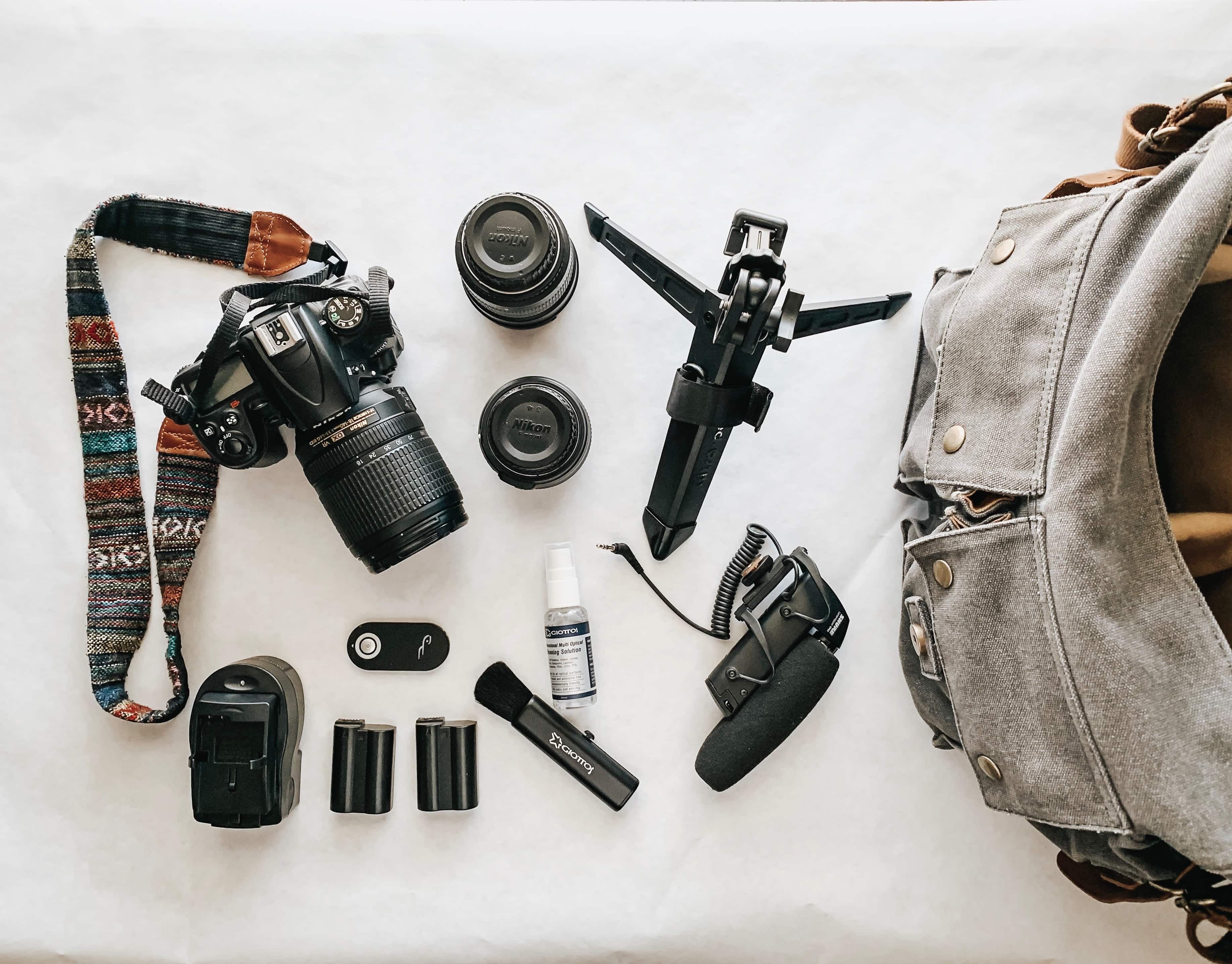
Photo by Derick McKinney on Unsplash
This one falls under the budgeting umbrella, but there are some areas where you can save money if you are smart.
Buying a Camera for Your Film
The potential pitfall of buying the right camera is that you watch an episode of CSI and the 20 camera angles in 5-seconds makes you think you need multiple cameras.
Next thing you know, you’ve got multiple cameras and no money left.
Think about what you need, not what you think you want; this decision will be vital for your film and your pocket.
In simple terms, don’t buy two cameras if you can do it with one.
We have a great guide on buying the best budget camera for filmmaking. That’s an excellent place to start.
Get the Sound Right
The fact is you can’t make a film without a camera, so that’s the most vital piece of equipment on your list.
However, it’s a fact that poor sound quality puts viewers off more than poor video quality, within reason, of course.
Think about it; we’ve all seen a less than perfect quality video but watched it in full because it had us hooked.
Have you ever sat through an entire film when you couldn’t hear the dialogue properly? Most probably not!
Here are a few types of microphones to consider.
Shotgun Microphones
If you aren’t sure what a shotgun microphone is, they are those really slim cool looking ones.
Besides looking cool, they do a few very useful things.
As the name suggests, they are a point and shoot directional microphone, but they don’t fire the cleanest shot, like a shotgun, they pick up some surrounding noise.
If you are recording dialogue, what you end up with is a mix of vocals and ambient noise.
That ambient noise is what makes the viewer feel like they are right there in the action.
It can be anything from traffic in the background to simple room noise like a refrigerator humming in the corner of the room.
Some ambient noise needs to be enhanced in post-production. Shotgun microphones are great for recording foley, too.
Video Microphones
Video microphones are basically shotgun microphones that attach to your camera.
They are often used as an upgrade from basic camera audio, but by no means perfect quality.
In certain situations, a low-budget film, shot in the right conditions (indoors) might get away with using a video mic as your only shotgun mic, especially if you work some magic in editing.
But even if you have a high-quality shotgun mic, a video mic still is still worth having.
It creates a better reference track than your camera alone would, which makes it easier to sync the final audio and video later on.
Lavalier Microphones
Lav microphones are those little mics you see clipped onto shirts and jackets on talk shows, and things like that.
They are quite commonly referred to as lapel mics for that reason.
These microphones are crucial for capturing clean dialogue.
Lav mics are small enough to conceal under a shirt and can be wireless, too.
Just remember a wireless mic needs a wireless audio recorder and might add to your spend.
For some scenes, you could go old school with a wired lav mic going to a small recorder in your subject’s pocket; the audience will never know, don’t worry.
Capturing great audio for your film will take a combination of these microphones, this isn’t where you want to cut corners.
Accessories
The last thing you want to see is the camera shaking like The Blair Witch Project when it should be stationary.
It pains me to say, but some of you may be too young to remember The Blair Witch Project, but it’s a mockumentary style horror where kids run around the woods with a handheld camcorder.
If you want a nice steady video, you’ll need a tripod.
Tripods can be very cheap or very expensive, but unless you’re filming with a $20,000 camera, a fairly cheap tripod will do!
A decent tripod will not only set your camera in a steady position/height, but it will also allow you to rotate the camera very smoothly to follow your subject.
Another great accessory that won’t break the bank is a handheld camera stabilizer.
You will undoubtedly be doing some freehand shooting if it’s a small budget film.
A good camera stabilizer will make a huge difference; it will also make holding the camera much more comfortable.
If you are flying solo as the director, cameraman, and sound engineer, a stabilizer is handy for mounting gear like an audio recorder.
That way, you can monitor your audio levels as you shoot.
For a bit more lateral movement, you can pick up a track dolly slider for your tripod.
Again, this is something that doesn’t need to cost too much at all.
What you don’t want to do is rush out and buy a lengthy rail track and expensive tracking dolly that will be really great for one particular scene.
Let There Be Lighting
Lighting is a tricky one because it’s both a practical and creative decision.
On the practical side, it’s an area where you can most likely save some money.
You don’t need Hollywood studio lights to make your shot look good; you just need decent lights used in the right way.
Revert to your script, you might not have exact locations yet, but you should have a clear idea of what kind of area your main scenes will take place.
This info should help you decide what kind of lights and reflectors (outdoor) you need.
Then you can set about getting the lighting rig you need at the lowest possible price.
We have an awesome guide on lighting in film that you need to check out.
Editing Software
If you like to be in control of every aspect of your film, as most creatives do, you’ll want to get some good editing software.
The alternative is that you hand your project over to a video editor and pay them to do it.
The problem is that it’s tempting to micromanage and complicate the whole process rather than trust them fully with your baby.
Editing software can get pretty expensive, but the good news is that most developers like Adobe, now offer their software on a monthly subscription basis.
Adobe Premiere Pro is an industry-standard video editing platform, and as luck would have it, we already put together a beginner’s guide for you.
Casting the Right Talent for Your Film
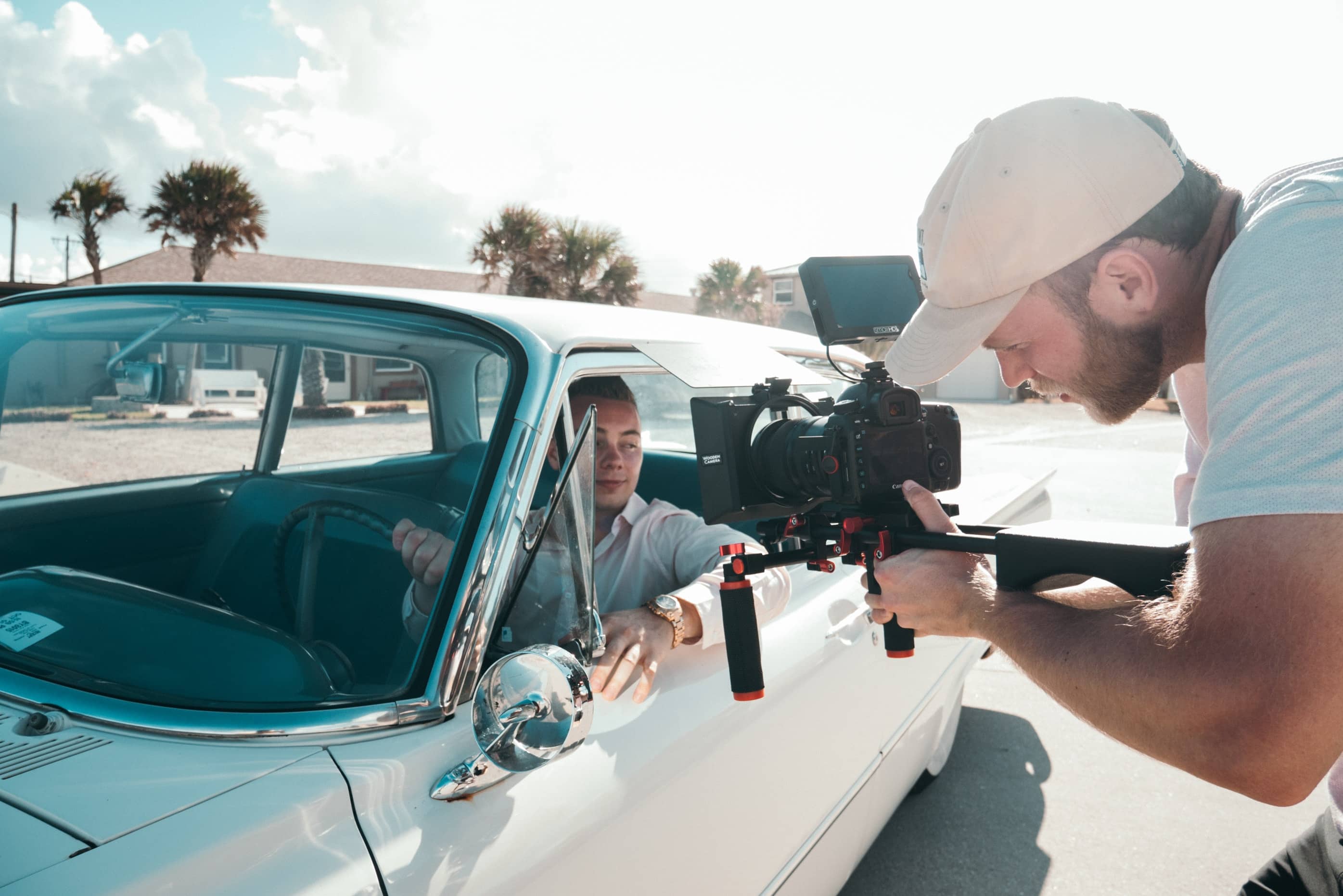
Photo by KAL VISUALS on Unsplash
It’s quite common that the talent in small budget films is friends, relatives, and/or associates of the filmmaker.
In this case, you should be able to save some money on fees! Although we must insist that you treat your talent fairly.
As a low budget film, the cast is likely to be small, which means you have more opportunities to develop their characters on screen.
The downside of that is that the characters have to ring true more than ever because they have fewer people to shoulder the weight of the story with them.
While the idea of free acting from friends and family sounds great, you need to find the right people for the parts, free or not.
Getting some help behind the camera can be important, too.
It’s also something you can rope your less experienced family or friends into, holding a mic boom, for example.
You might want to think about getting an experienced sound engineer if it’s not one of your strong points.
You might even want to consider bringing on board a camera operator if you want to step back and take it all in as the director.
Who you bring in behind the scenes will depend on your approach to filmmaking as well as your budget.
Here’s a tip to save some money on talent, and this goes for cast and crew.
In the creative world, it’s normal for people to exchange services rather than money.
Find some talented people who believe in your project and would benefit from being involved.
Providing a platform for them to showcase their ability could be the perfect exchange for their services, and everyone furthers their career at the same time.
As a footnote, we would suggest that doing things yourself is a great way to save money, but stretching yourself too thin is a sure way to fail, so be sensible.
Location, Location, Location

Photo by elCarito on Unsplash
So you have your script, your equipment, and your talent, now you need a location, or several.
Again, your script should already be dictating the type of location for each important scene.
You just need to find the exact locations now and make sure they are available to you.
Indoor scenes should be more straightforward without worrying about weather conditions or random interactions too.
If you have access to houses/apartments through friends or family that work for your film, that’s ideal.
That should cover a lot of your indoor shots, but if you need different types of properties, commercial or retail, for example, then partnering with people is a good option.
You need to think outside the box at times; you’ll be surprised how willing some people are to help for a special thank you in the credits.
The worst they can do is say no!
Shooting outdoors is trickier, apart from weather conditions to think about, you need to consider how populated the area is at certain times.
If you want to shoot a scene on the Las Vegas strip at night, you’re probably going to have every second passerby waving at your camera.
The same goes for any busy public area, so the ideal location isn’t always the ideal location when you get there.
That means you might need to make some sacrifices to find a suitable location where you won’t be disturbed.
If you’re filming in a public area, it’s a good idea to bring a couple of people to act as buffers to guide people safely around your scene. Keep in mind if you do that, you are asking for people’s good nature, so do it politely.
Another issue with public locations is that you may need a permit to film, so always check with the local authorities to make sure you have everything in order.
If you are on private property, then, of course, make sure you have consent from the owner.
The final thing to consider with your locations is continuity.
Don’t shoot half a scene in the rain and finish it the next day with sunshine and rainbows.
Similarly, don’t film a scene in some obscure location that looks amazing if it doesn’t make sense for the story and the other locations.
Choose the Perfect Music for Your Film
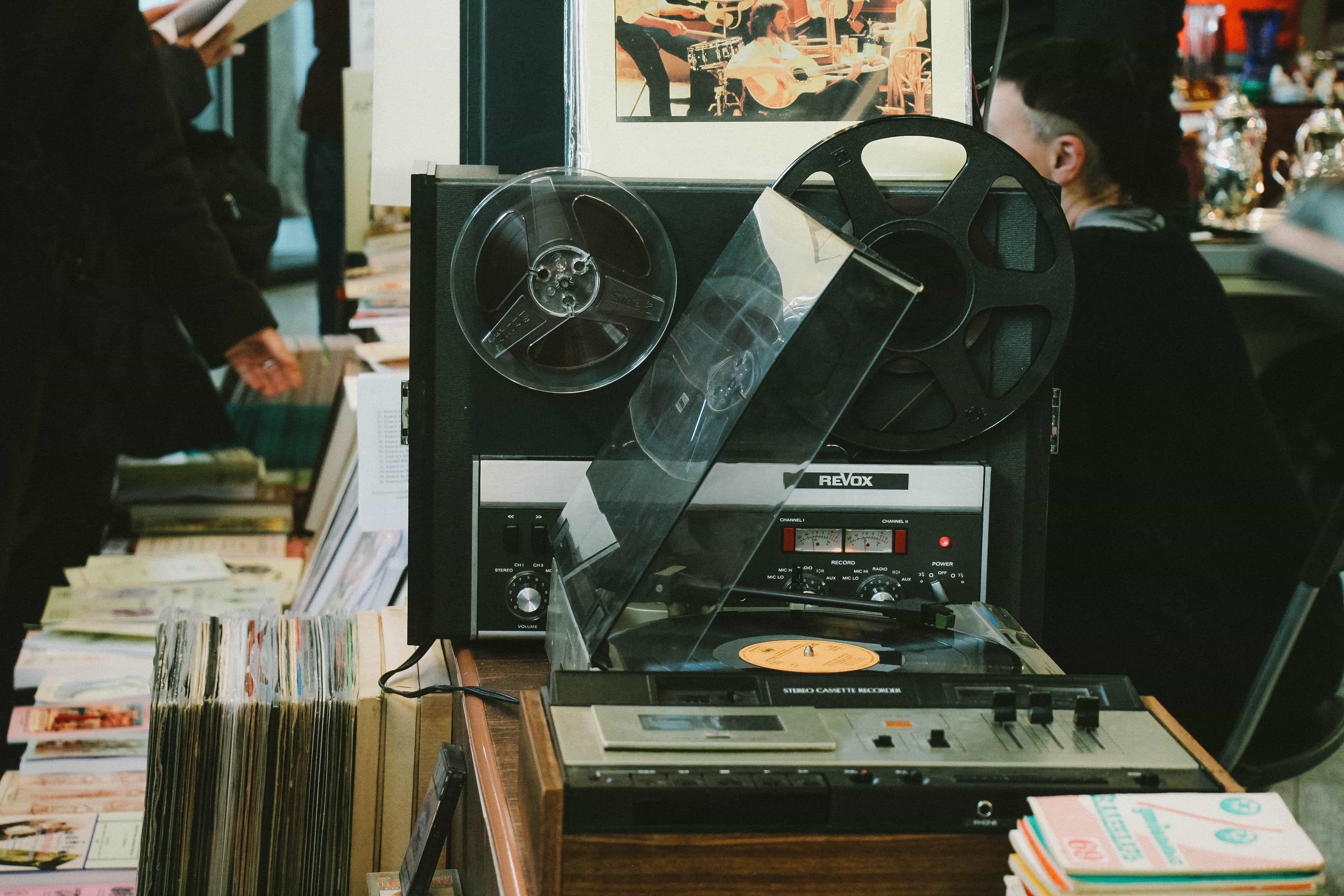
Photo by Ignat Kushanrev on Unsplash
There are different opinions on how and when you should think about music for your film.
Some people will tell you to choose the main themes/tracks once you have written your script, others will tell you not to think about music until you finish filming.
The truth is it should be a combination of both; you should be thinking about music from day one.
As soon as you start writing characters and scenes, you’ll begin to get ideas about what kind of music will work.
These ideas don’t need to be exact; it could be as simple as saying you think a particular scene will suit a chilled piano instrumental.
If you do that, you’ll soon have a pretty clear template matching scenes to styles of music.
Once you start to go into production, you can develop those ideas more by browsing our library of incredible royalty-free music.
We have everything from in your face action to elevator music that you only notice when it’s not there anymore.
It’s the perfect resource to start shortlisting tracks for each scene; then, when you have footage, you can use our exclusive Video Preview Tool to make sure you choose the perfect match.
It’s at this stage you can tweak ideas from your original template, and it’s not unheard of that a particular piece of music will convince you to make a slight change to your visual.
So, as we said, think about music right from the start, but don’t set anything in stone.
It has to be an ongoing development of original ideas to bring the two creative elements together; video and music.
Get it right, and it’s a powerful thing, check out our guide on finding the perfect music for your video for some inspiration.
Create A Production Schedule
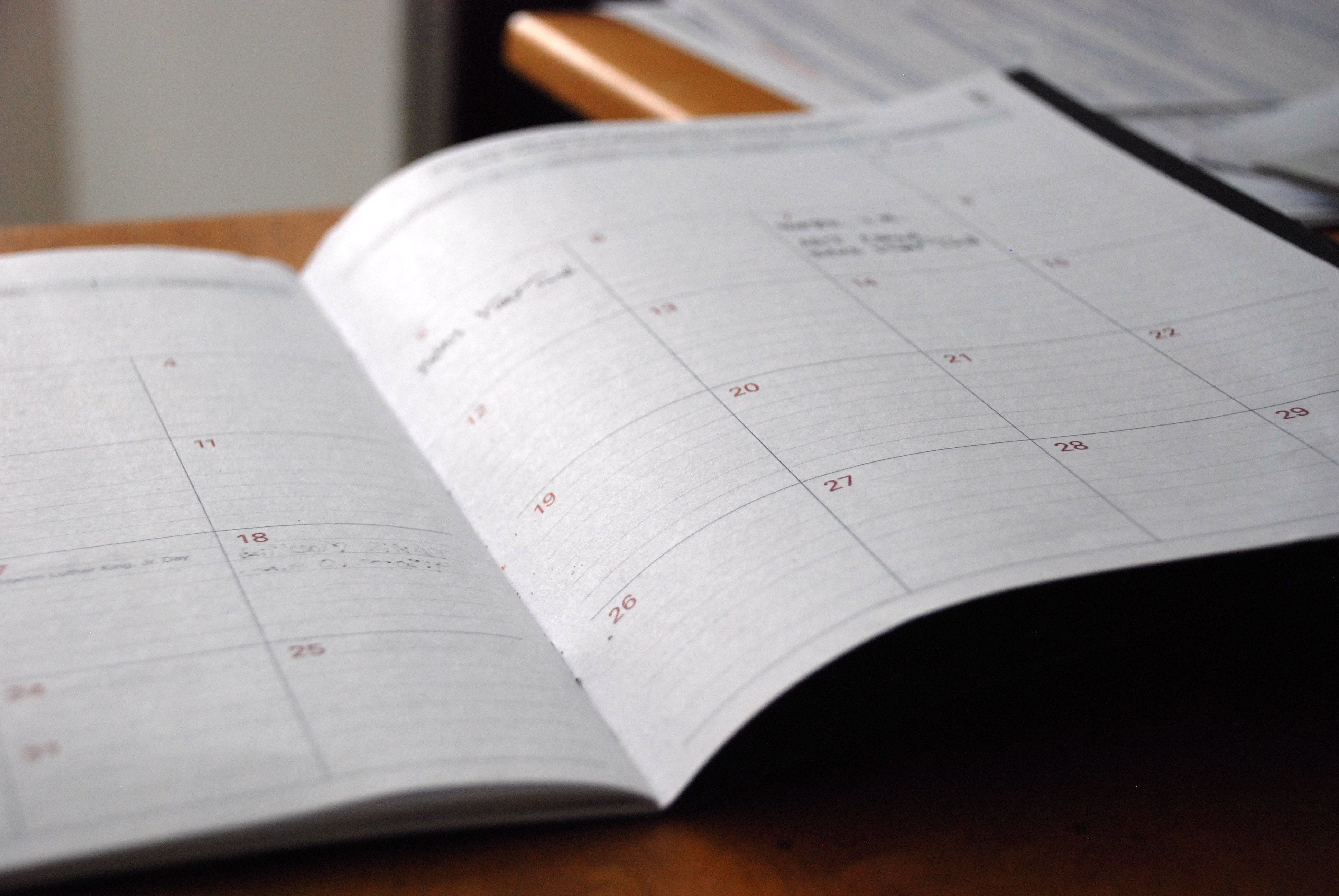
Photo by Eric Rothermel on Unsplash
Any project will run more smoothly if it is planned well from day one.
Even though we are talking about a production schedule, it’s also a good idea to schedule your pre-productions tasks like casting, scouting locations, etc.
Scheduling rehearsal times is something that can cause unnecessary problems.
Make sure you consider everyone’s schedule, which means your cast and crew, not just your own, and arrange a timetable that suits everyone.
When scheduling your shooting days, don’t forget to think about the availability of your locations.
Don’t expect to shoot everything chronologically like it is in your screenplay.
Get your filming done when locations are available, and when the conditions are right.
For example, don’t schedule two days of outdoor scenes when the weather report warns of a storm on the way.
Similarly, if you get the perfect weather conditions to shoot your outdoor scenes, don’t spend the time filming indoor scenes that you could do anytime.
Plan as much as you can. If you do that, it will be easier to move things around if any obstacles come up.
That’s about enough from us, so get started and don’t forget us when you are a big-time filmmaker.
Audio Buzz has the perfect music for every film, big or small!

